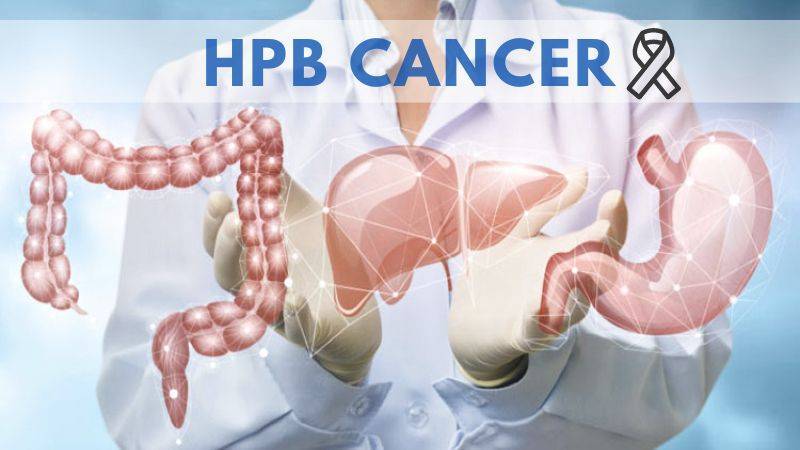HPB oncology refers to the field of medicine dedicated to the diagnosis, treatment, and management of cancers affecting the hepatopancreatobiliary (HPB) system.
This complex system includes vital organs such as the liver, pancreas, gallbladder, and bile ducts.
HPB cancers encompass a range of malignancies that require specialized expertise for effective management.
In this article, we will explore the significance of HPB oncology and ongoing advancements in the field.
Importance of HPB Oncology
The HPB system plays a crucial role in various physiological processes, including digestion, metabolism, and detoxification. Cancers affecting these organs can have a significant impact on overall health and require specialized care. HPB oncology aims to improve patient outcomes by providing comprehensive care through a multidisciplinary approach involving surgeons, medical oncologists, radiation oncologists, and other healthcare professionals.
Common HPB Cancers
a. Hepatocellular Carcinoma (HCC): HCC is the most common form of primary liver cancer and arises from the hepatocytes, the main cell type in the liver. Risk factors include chronic liver diseases such as hepatitis B or C, cirrhosis, and alcohol abuse.
b. Pancreatic Cancer: Pancreatic cancer is a highly aggressive malignancy that often goes undetected until later stages. Risk factors include smoking, obesity, family history, and certain genetic syndromes. Early symptoms are usually nonspecific, making early detection challenging.
c. Gallbladder Cancer: Gallbladder cancer usually develops in the lining of the gallbladder and is often detected at advanced stages. Risk factors include gallstones, chronic inflammation, certain infections, obesity, and certain genetic conditions.
d. Bile Duct Cancer (Cholangiocarcinoma): This cancer originates in the bile ducts, which carry bile from the liver to the small intestine. Risk factors include primary sclerosing cholangitis, bile duct cysts, liver fluke infections, and exposure to certain chemicals.
How are cancers of the Liver Pancreas and Bileduct (HPB Cancers) different?
Cancers affecting the liver, pancreas, and bile ducts, collectively known as HPB cancers, pose unique diagnostic challenges compared to other abdominal cancers.
While symptoms such as vomiting, gastrointestinal bleeding, and intestinal obstruction can often lead to the diagnosis of most abdominal cancers, HPB tumors often go undetected by these general investigations.
In order to identify these specific cancers, specialized tests like
- MRCP (Magnetic Resonance Cholangiopancreatography)
- EUS (Endoscopic Ultrasound)
- ERCP (Endoscopic Retrograde Cholangiopancreatography)
- Spy scopy
- Multi-slice CT scans
are required. Furthermore, the symptoms associated with HPB cancers are often subtle, necessitating a high level of suspicion and expertise for an accurate diagnosis.
Diagnostic Methods

Accurate diagnosis is crucial for effective management of HPB cancers.
Diagnostic methods include
- Imaging techniques such as ultrasound
- Computed tomography (CT) scans
- Magnetic resonance imaging (MRI)
- Positron emission tomography (PET) scans
Tissue samples obtained through biopsies or surgical procedures are analyzed to confirm the presence of cancer and determine its characteristics.
Specific Risk Factors for Liver and Pancreatic Cancer
Liver and pancreatic cancers are influenced by specific risk factors that can increase an individual’s susceptibility to these diseases.
Here are the key risk factors associated with each:
Liver Cancer
- Chronic Liver Diseases: Patients with Hepatitis B, Hepatitis C, and alcoholic liver disease are at a higher risk for developing liver cancer. Regular imaging and blood tests every six months are recommended for early detection in these individuals.
- Obesity and Fatty Liver: Individuals with a Body Mass Index (BMI) exceeding 30, along with conditions like diabetes and fatty liver, are at an elevated risk for liver diseases and liver cancer.
Pancreatic Cancer
- Smoking: Tobacco use, including smoking, is a significant risk factor for pancreatic cancer.
- Obesity: Being overweight or obese increases the risk of developing pancreatic cancer.
- Fatty Liver: Similar to liver cancer, having fatty liver disease is associated with a higher predisposition to pancreatic cancer.
- Sedentary Lifestyle: Lack of physical activity and a sedentary lifestyle contribute to an increased risk of pancreatic cancer.
- Chronic Pancreatitis: Chronic pancreatitis resulting from conditions such as alcoholism or tropical pancreatitis (common in India) can also elevate the risk of pancreatic cancer.
It is important for individuals with these risk factors to be vigilant about their health, undergo regular screenings if recommended by healthcare professionals, and make necessary lifestyle modifications to mitigate the associated risks.
Early detection and timely intervention can significantly improve outcomes in liver and pancreatic cancers.
The Significance of HPB Oncology: Why is a Subspecialty Needed?
The management of hepatopancreatobiliary (HPB) cancers presents unique challenges due to their complexity and potential for higher morbidity and mortality rates compared to regular surgeries. Let’s explore more:
Complexity of HPB Surgeries: Surgical management of HPB cancers, particularly liver and pancreatic cancers, requires extensive experience and expertise due to the complexity of these procedures. The HPB surgeon must go beyond the standard surgical approach of “CHOP CUT STITCH” and possess a deep understanding of the intricate physiology of these organs. Moreover, these tumors often involve critical vascular structures, necessitating proficiency in vascular surgery techniques. This is crucial in the postoperative period, especially for high-risk patients.
Achieving Optimal Outcomes through Specialization: Scientific evidence supports the notion that centers specializing in HPB oncology and providing focused, high-volume care yield the best treatment outcomes. Unfortunately, many cancer centers in India adopt a “jack of all trades” approach, offering treatment for a wide range of cancers without specific focused expertise. As a result, the volume of HPB cases remains low, hindering the development of specialized skills.
Advantages of Specialized Expertise:
a. Surgical Expertise: Specialized HPB centers cultivate surgical expertise in both benign and malignant liver conditions. The surgeons in these centers possess advanced skills and knowledge necessary for complex liver surgeries, enabling them to deliver better outcomes.
b. Vascular Expertise: The involvement of critical vascular structures in HPB tumors highlights the importance of expertise in vascular surgery. Specialized HPB surgeons are well-versed in handling these intricate vascular connections, minimizing the risk of complications and maximizing surgical success.
c. Diagnostic Expertise: HPB oncology subspecialists also possess specialized diagnostic expertise, utilizing advanced techniques such as MRCP, EUS, ERCP, Spy scopy, and multi-slice CT scans to accurately diagnose and stage HPB cancers. This comprehensive approach facilitates timely intervention and tailored treatment plans.
- Enhancing Volumes and Expertise: By focusing on HPB oncology as a subspecialty, centers can consolidate their resources and concentrate on increasing patient volumes. Higher patient volumes not only provide surgeons with more experience but also enable the development of specialized multidisciplinary teams, including medical oncologists, radiation oncologists, and other healthcare professionals, further enhancing the overall care provided to HPB cancer patients.
Treatment Options

The treatment approach for HPB cancers depends on factors like cancer stage, tumor location, patient’s overall health, and individual preferences. Treatment modalities may include:
a. Surgery: Surgical resection aims to remove the tumor and surrounding tissues. Depending on the cancer type and extent, procedures such as liver resection, Whipple procedure, or bile duct resection may be performed.
b. Radiation Therapy: This technique employs high-energy radiation to target and destroy cancer cells. It can be used as a primary treatment or in combination with surgery or chemotherapy.
c. Chemotherapy: Anti-cancer drugs are administered orally or intravenously to kill cancer cells or inhibit their growth. It can be used before surgery to shrink tumors (neoadjuvant) or after surgery to eliminate remaining cancer cells (adjuvant).
d. Targeted Therapy: These drugs specifically target cancer cells by interfering with specific molecules involved in their growth and survival. Targeted therapy may be used when certain genetic mutations or biomarkers are present in the tumor.
e. Immunotherapy: This innovative treatment modality harnesses the body’s immune system to recognize and attack cancer cells. Immunotherapies, such as
Conclusion
HPB cancers affecting the liver, pancreas, and bile ducts present unique challenges in diagnosis. Their location and subtle symptoms necessitate the use of specialized diagnostic tests.
The expertise of healthcare professionals, along with a high level of suspicion, plays a crucial role in identifying and diagnosing these cancers accurately.
Early detection through specialized diagnostics is vital for timely intervention and improved treatment outcomes in patients with HPB cancers.
Take Care of Yourself!
Also Read






